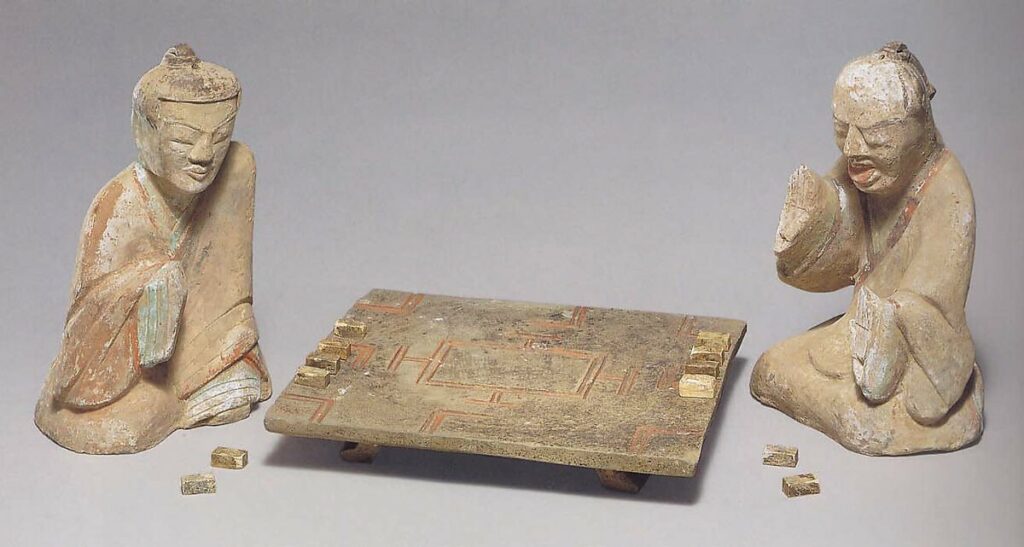Why Liubo?
The ancient Chinese board game Liubo (六博, c. 500 BCE?) was once very popular but is now only known from limited artifacts and texts. Its boards are often found buried in tombs, along with playing pieces. Scholars have argued for centuries about how the board game was actually played, and several methods have been proposed. Recently, archaeologists exploring the tomb of a disgraced Han emperor (海昏侯墓) found the most extensive written description of Liubo ever discovered – including lists of moves that record sessions of play. For the first time, this potentially allows reconstructed rulesets for Liubo to be tested against records of play, to see if they are accurate or make sense.
History
The ancient Chinese board game Liubo (六博棋) was popular around 500 BCE to 500CE. It was a gambling and strategy game that also used for divination. But the actual rules are lost and what remains are the historical artifacts discovered from ancient tombs.

A board divided into roads, and twelve pieces (six for each players) and dice thrown to determine moves, constitute the basic equipment for the game.


What we know about Liubo
- 2 Players
- 6 Pieces Each
- Theme: Birds Catching Fish
- Special Piece called “Owl”
- Board Shape
- Sticks/Dice
- Bargaining Sticks
What we don’t know
- Movement Rules
- Variations of Boards/Props
- Win Condition
